Cyberfetus Rising
The Star Larvae Hypothesis: Nature's
Plan for Humankind (Addendum )
 Technology
decommissions the specialized adaptations of the adult body. The neoteny that
results illustrates gene-culture coevolution. In outer space that process will
deliver a posthuman form anticipated by the religious figure of the cherubic
angel, or putto, the celestial infant.
Technology
decommissions the specialized adaptations of the adult body. The neoteny that
results illustrates gene-culture coevolution. In outer space that process will
deliver a posthuman form anticipated by the religious figure of the cherubic
angel, or putto, the celestial infant.
Living in the weightlessness of outer space, humankind's extraterrestrial descendants will have removed themselves
from their terrestrial kin not only geographically, but also physiologically and
psychologically. Their bones and muscles will atrophy to wisps under the
influence of weightlessness, while their brains hypertrophy, becoming super enriched. This physiological one-two punch
will juvenilize extraterrestrials. ETs will enjoy retarded biological
development.
The
creatures that result from these changes will resemble human infants more than
they will resemble human adults. That is, weightlessness will induce, elicit,
or evoke a neotenous response to the environment of outer space. Space
colonists, a small inbreeding population, will be isolated reproductively from
their contemporaries on Earth. These several circumstances set the stage for a
posthuman speciation.
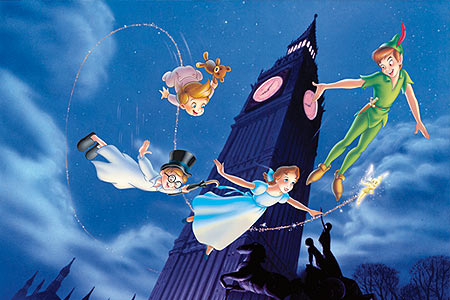 Juvenile skywalkers
are common in popular folklore and fables. The stereotypical UFO alien, for
example, with its fetal allometry (big head, small limbs); Peter Pan, the
eternally youthful high-flyer; the cosmic fetus that closes out Kubrick's 2001, A Space Odyssey, and
other fantasy figures link juvenile forms with life in the sky.
Juvenile skywalkers
are common in popular folklore and fables. The stereotypical UFO alien, for
example, with its fetal allometry (big head, small limbs); Peter Pan, the
eternally youthful high-flyer; the cosmic fetus that closes out Kubrick's 2001, A Space Odyssey, and
other fantasy figures link juvenile forms with life in the sky.
Perhaps
the most explicit renderings of extraterrestrial tots are the putti, the flying babies of Renaissance and Victorian art.
Babies in the clouds are curious representations of spiritual entities, evolved
beyond the merely human. The evolutionary program might be expressing itself
culturally.
 Among
the flying babies, the St. Valentine's Day Cupid seems eager to advance the
evolutionary program. As a symbol, the figure of cupid combines neoteny—retarded
development— sexuality, and weightlessness, a sure-fire recipe for speciation.
Neoteny itself has a well-established propensity to launch species. As
Ecologist Ramon Margalef notes in Perspectives
in Ecological Theory
Among
the flying babies, the St. Valentine's Day Cupid seems eager to advance the
evolutionary program. As a symbol, the figure of cupid combines neoteny—retarded
development— sexuality, and weightlessness, a sure-fire recipe for speciation.
Neoteny itself has a well-established propensity to launch species. As
Ecologist Ramon Margalef notes in Perspectives
in Ecological Theory
What space is more likely to trigger
nonhabitual modes of speciation than outer space?
Human evolution generally already has been
neotenous. Humans are the juvenilized descendants of
apish ancestors, according to some evolutionary theorists, including paleontologist
Stephen Jay Gould. And the neotenous trend is likely to accelerate under the
influence of weightlessness. Humankind's extraterrestrial descendants might not
develop beyond the form of the fetus, the embryo or even the zygote—the newly
fertilized egg—eventually, this trajectory being dictated by the pattern of
development common to all complex organisms.
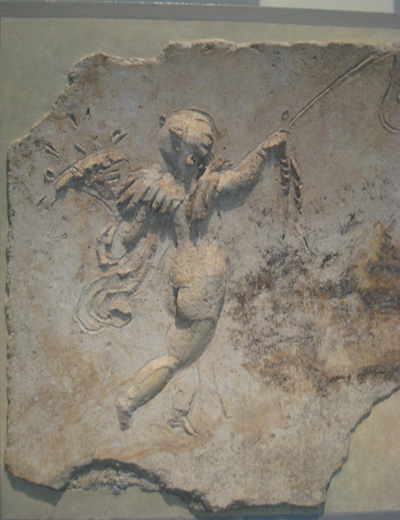 |
The archetypal putto, shown here on Greek stone
reliefs.
|
 |
Each
complex organism begins life as a single-celled zygote, which divides into an
undifferentiated clump of cells before the cells give rise to specialized
tissues. As the organism develops—as its ontogeny
unfolds—it acquires more of the anatomy and morphology characteristic of its
adult form. The tails, fangs, and wings that grow more conspicuous during
development constellate into a distinctive bodily form, the adult form of the
species. Rat, boar and ostrich embryos share a common form, initially, then
differentiate into their specialized adult forms.
(Nineteenth-century
German naturalist, Karl Ernst von Baer recognized this developmental trend of
differentiation from a general form into a specialized one. Among biologists,
Von Baer's observation has replaced the so-called biogenetic law of Ernst
Haekel as the favored view. Haekel's law, which asserts that during development
organisms pass through the adult stages of their ancestors, is summarized in
the well known formula, "Ontogeny recapitulates phylogeny." This
formula persists in popular contexts, but scientists today dismiss it as
discredited. In 1988 the president of the National Academy of Sciences
concluded, "The biogenetic law is as dead as a doornail"
["Ontogeny and Phylogeny Recapitulated," American Scientist, May-June
1988]. According to von Baer's law of progressive differentiation, neotenous
descendants resemble the juvenile form of their ancestors—in contrast to
Haekel's law, which predicts that neotenous descendants will resemble ancestral
adults.)
 |
All complex organisms share a common
morphology—initially. They acquire their distinctive, specialized adult forms
as they develop. By retarding development, neoteny produces adults with
juvenile features. This de-differentiation of morphology provides adaptive
advantages in rapidly changing environments, including, one has to suppose,
high-tech environments.
|
In
unstable, rapidly changing environments, neoteny enables organisms to jettison
adaptations that have outlasted their usefulness. As for the environmental
changes that promote human neoteny, technology seems to be in the mix. The work
of anthropologist C. Loring Brace provides an example of the evolutionary
effects of technology. Brace discovered adult human skeletal remains that are
peculiarly retarded—they're toothless. Brace explains the connection to
technology: "Human skeletal collections from the Neolithic and subsequent
periods contain the remains of individuals who had survived for years in a
completely edentulous [toothless] state. No such evidence is available for any
human population that did not use pottery.
Pounding,
grinding, and milling tools also become common late in the Pleistocene . . .
and it seems likely that this may also have contributed to the relaxation of
Pleistocene levels of selection, which had maintained large amounts of tooth
substance." (Brace, C. Loring, Karen R. Rosenberg, and Kevin D. Hunt,
"Gradual Change in Human Tooth Size in the Late Pleistocene and Post-Pleistocene,"
Evolution, 41(4), 1987, pp. 705-720. See also, "Human Teeth, Small
Already, Continue to Shrink," The New York Times, August 30, 1988.)
Food-processing
technologies reduce the need for big teeth, biology's natural grinding and
milling tools. Big teeth become unnecessary and unable to return the metabolic
investments that they require, once automation technologies, such as pounding,
grinding, and milling tools, become available.
Technology Extends, then Supplants,
the Body
"The
first tools were probably conceived initially as simple extensions of the human
body,"
surmises David Barash in The
Hare and the Tortoise: Culture, Biology, and Human Nature , "the club a stylized
and more powerful hand and fist, the bowl and pouch more efficient cupped
hands, the flint scraper a heavy-duty fingernail. . . ." Marshall McLuhan
made the same observation. His opus, Understanding
Media, he subtitled "The extensions of man." Philosopher
Jean-Francois Lyotard defines the same relationship in The
Postmodern Condition: "Technical devices originated as prosthetic aids
for the human organs or as physiological systems whose function it is to
receive data or condition the context."
, "the club a stylized
and more powerful hand and fist, the bowl and pouch more efficient cupped
hands, the flint scraper a heavy-duty fingernail. . . ." Marshall McLuhan
made the same observation. His opus, Understanding
Media, he subtitled "The extensions of man." Philosopher
Jean-Francois Lyotard defines the same relationship in The
Postmodern Condition: "Technical devices originated as prosthetic aids
for the human organs or as physiological systems whose function it is to
receive data or condition the context."
As
physical capacities get extended technologically, the body parts to which they
correspond atrophy, as teeth do when they compete with food-processing
technologies. L. Frank Baum, author of the early OZ books intuited this effect.
The tin woodsman of Oz was ordinary flesh and blood, originally. But as he
worked his ax would rebel and chop off parts of his body. A tinsmith replaced
each severed part until the woodsman was remade entirely of tin. Technology had
supplanted the body completely. Mircea Eliade cites another version of this
motif, in The
Two and the One :
:
Here
the blade's—technology's—cleaving of body parts is associated with ascent. And
the motif is pervasive. Though associated mostly with India, Eliade finds
examples in cultures as far flung as those of China, Mexico, and Ireland.
The
technological environment is a milieu of gadgets whirring and chugging in space
and time in lieu of human bodies. Freud, for one, welcomed the concommitant
prosthetic effect. In Civilization
and Its Discontents , he declares, "With
every tool man is perfecting his own organs, whether motor or sensory, or is
removing the limits to their functioning. Man has, as it were, become a kind of
prosthetic God. When he puts on all his auxiliary organs he is truly
magnificent."
, he declares, "With
every tool man is perfecting his own organs, whether motor or sensory, or is
removing the limits to their functioning. Man has, as it were, become a kind of
prosthetic God. When he puts on all his auxiliary organs he is truly
magnificent."
"It is often said that
nothing makes sense except in the in the light of history, meaning cultural
change over a few centuries. More accurately, nothing makes sense except in the
light of organic evolution, which encompasses a tightly linked form of cultural
and genetic change and spans hundreds of thousands of years."
"Whence the debility, the
infantile degeneration of this imaginary. It is meant to be an infantile world,
in order to make us believe that the adults are elsewhere, in the
"real" world, and to conceal the fact that real childishness is
everywhere, particularly amongst those adults who go there to act the child in
order to foster illusions as to their real childishness."
Evolutionary
pressures for metabolic economy allow tools to supplant the
specialized—adult—body parts that they functionally simulate (and outperform).
By extending the functions of specialized body parts, technology relaxes
selection pressures for the maintenance of those parts. McLuhan called the
process, "autoamputation." Hence, technology and neoteny proceed hand
in hand.
This
ability of tools to shape the human phenotype finds a more formal theoretical
foundation in the gene-culture coevolution model of sociobiologist Edward O.
Wilson. Humankind was synthesized by "a sustained autocatalytic reaction
in which genetic and cultural evolution drove each other forward," Wilson
and colleague Charles Lumsden propose in Promethean
Fire . "This largely unknown
evolutionary process we have called gene-culture coevolution: it is a
complicated, fascinating interaction in which culture is generated and shaped
by biological imperatives while biological traits are simultaneously altered by
genetic evolution in response to cultural innovation."
. "This largely unknown
evolutionary process we have called gene-culture coevolution: it is a
complicated, fascinating interaction in which culture is generated and shaped
by biological imperatives while biological traits are simultaneously altered by
genetic evolution in response to cultural innovation."
Although
Wilson and Lumsden tend to restrict their use of "culture" to
behaviors, clearly the concept must include artifacts, implements,
devices—technology. The notion of "epigenetic rules" that they use to
link genes and social behaviors in a feedback relationship applies as readily
to the linking of genes and the crafting and use of tools. In this view, a
species that modifies its environment technologically—that is, one that
constructs its niche—becomes locked into an evolutionary feedback circuit in
which it and its technologies mutually shape one another, symbiotically.
Recently, this insight has inspired much research among evolutionary biologists
working under the banner of Niche Construction.
Techneoteny—The Primary Mode of
Gene-Culture Coevolution
Neoteny
and technology feeding off each other—techneoteny—appears to be humankind's primary
mode of evolution. Neoteny is an adaptation to the manufactured environment.
This adaptation sometimes is called domestication.
What
was true of the grinding tools and pottery of neolithic cookery should apply to
subsequent generations of technologies: they each should contribute to the
autocatalytic cycle of neotenous gene-culture coevolution. If we fast forward
from the Pleistocene to the present, we see the techneotenous gyre tightening
and taking a greater toll on the more highly differentiated gendered phenotype,
the male phenotype. Though technology tends to be associated with the
prerogatives of the masculine, it produces environments increasingly hospitable
to the feminine.
Havelock
Ellis noticed the connection already at the end of the nineteenth century. In
his Man
and Woman: A Study of Human Secondary Sexual Characters , he observes, "Savagery
and barbarism have more usually than not been predominantly militant, that is
to say masculine, in character, while modern civilization is becoming
industrial, that is to say feminine, in character, for the industries belonged
primitively to women, and they tend to make men like women." This
feminization is neotenous, Ellis contends, citing what he calls the
"infantile diathesis" of women: "When women differ from men, it
is the latter who have diverged, leaving women nearer to the child-type. Women
are nearer to children than are men [and] the child represents a higher degree
of evolution than the adult."
, he observes, "Savagery
and barbarism have more usually than not been predominantly militant, that is
to say masculine, in character, while modern civilization is becoming
industrial, that is to say feminine, in character, for the industries belonged
primitively to women, and they tend to make men like women." This
feminization is neotenous, Ellis contends, citing what he calls the
"infantile diathesis" of women: "When women differ from men, it
is the latter who have diverged, leaving women nearer to the child-type. Women
are nearer to children than are men [and] the child represents a higher degree
of evolution than the adult."
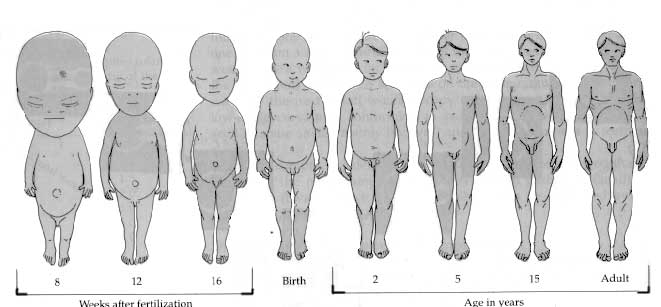 Trends in Allometry: Terrestrial human ontogeny
reads from left to right. Post-terrestrial post-human phylogeny
reads from right to left.
Trends in Allometry: Terrestrial human ontogeny
reads from left to right. Post-terrestrial post-human phylogeny
reads from right to left.
The
ancient world recognized the link between the industrial and the feminine. Some
early practitioners of metallurgy, for example, built their lore on a mythos of
gestation and incubation. "Very early on we are confronted with the notion
that ores 'grow' in the belly of the Earth after the manner of embryos,"
Mircea Eliade comments in The
Forge and the Crucible: The Origins and Structure of Alchemy , "Metallurgy thus takes
on the character of obstetrics. Miner and metalworker intervene in the
unfolding of subterranean embryology: they accelerate the rhythm of the growth
of ores, they collaborate in the work of Nature and assist it to give birth
more rapidly." Eliade goes on to cite the traditions of the Atonga, who
"have a custom of throwing into the furnace a portion of the placenta to
ensure the success of the smelting."
, "Metallurgy thus takes
on the character of obstetrics. Miner and metalworker intervene in the
unfolding of subterranean embryology: they accelerate the rhythm of the growth
of ores, they collaborate in the work of Nature and assist it to give birth
more rapidly." Eliade goes on to cite the traditions of the Atonga, who
"have a custom of throwing into the furnace a portion of the placenta to
ensure the success of the smelting."
"The common defect of all
mystical systems previous to that of the Aeon whose Law is Thelema is that
there has been no place for laughter. But the sadness of the mournful Mother
and the melancholy of the dying Man are swept into the limbo of the past by the
confident smile of the immortal Child."
Mary
Shelley's Frankenstein assigns a more overtly
anthropomorphic form to the industrial feminine. Critics conventionally
interpret the story through the lens of its Promethean subtitle, but critic
Steven Lehman interprets it as an allegory of male womb envy. He argues,
"[Dr. Frankenstein's] problem—and it is the central thematic problem of
the novel—is that modern science obviates the biological gender distinctions
upon which our psychology and society have been built." (Lehman, Steven,
"The Motherless Child in Science Fiction: Frankenstein and Moreau," Science
Fiction Studies, No. 56, 1992, pp. 49-58.) Technology cures Dr. Frankenstein's
womb envy by enabling him to give birth to artificial life. It allows Victor
Frankenstein to mother the prototypical problem child. If technologies are
extensions of the body, then inventing must be a birthing.
assigns a more overtly
anthropomorphic form to the industrial feminine. Critics conventionally
interpret the story through the lens of its Promethean subtitle, but critic
Steven Lehman interprets it as an allegory of male womb envy. He argues,
"[Dr. Frankenstein's] problem—and it is the central thematic problem of
the novel—is that modern science obviates the biological gender distinctions
upon which our psychology and society have been built." (Lehman, Steven,
"The Motherless Child in Science Fiction: Frankenstein and Moreau," Science
Fiction Studies, No. 56, 1992, pp. 49-58.) Technology cures Dr. Frankenstein's
womb envy by enabling him to give birth to artificial life. It allows Victor
Frankenstein to mother the prototypical problem child. If technologies are
extensions of the body, then inventing must be a birthing.
 More recently, male
womb envy has taken a digital turn. Computer programmers have adopted the
creation of "artificial" or "virtual" life as a technical
grail. Bold programmers claim that their growing, replicating, and adapting software
constitutes a new life form. Such Frankensteinian aspirations maybe express the
male urge to deliver life, but, despite any joy that they might derive from
their ersatz motherhood, the men of industry craft their own undoing.
More recently, male
womb envy has taken a digital turn. Computer programmers have adopted the
creation of "artificial" or "virtual" life as a technical
grail. Bold programmers claim that their growing, replicating, and adapting software
constitutes a new life form. Such Frankensteinian aspirations maybe express the
male urge to deliver life, but, despite any joy that they might derive from
their ersatz motherhood, the men of industry craft their own undoing.
In
The
Mechanical Bride McLuhan renders an image of male impotence at the hands of
industry: "Under complex conditions of rapid change, the family unit is
subject to special strain. Men flounder in such times. The male role in
society, always abstract, tenuous, and precarious compared with the biological
assurance of the female, becomes obscured. Man the provider, man the codifier of
laws and ritual, loses his confidence." Given the dire circumstances, a
men's movement may have been inevitable. Poet Robert Bly, a central figure in
the men's movement of the 1980s, winces at the link between industry and
immaturity:
"If
you walk from Boston to Labrador, you’re more mature when you arrive; If you
drive, you’re more infantile when you arrive. The Industrial Revolution brought
central heating and the automobile. Not only does maturity fail, but a positive
movement toward regression is taking place. There’s a connection between
technology and infantilism. It’s sad." (Interview in EastWest, March 1986,
p.72.) Despite technology’s more immediate undermining of traditional male
roles, the specialized roles of male and female seemed destined ultimately
to converge on the generic child type. "The wolf shall dwell with the
lamb, and a little child shall lead them," as the prophet foresaw.
"In a real man a child is
hidden—and wants to play. Go to it,
women, discover the child in man! Let woman be a plaything, pure and fine, like
a gem, irradiated by the virtues of a world that has not yet arrived. Let the
radiance of a star shine through your love! Let your hope be: May I give birth
to the overman!"
Myth
and folklore typically describe the first human as an androgynous creature,
then account for the androgyne giving rise to gendered descendants. Similarly,
a fertilized egg—first human—is not obviously male or female, but
differentiates along gender lines as it develops. And myth and folklore also
often describe a reintegration of the genders that restores the original,
undifferentiated, androgynous form. Native, neotenous, extraterrestrials will
act out this alchemical script, as they revert phenotypically toward infantile
morphology.
Mircea
Eliade makes note of a mythological connection between the androgynous form and
divinity: "Certain apocryphal texts use paradoxical images to describe the
Kingdom or the overturning of the Cosmos occasioned by the coming of the
Saviour. It is to be noted that these images are used side by side with those
of androgyny and of a return to the state of a child."
Today
family members gather around the electronic hearth to consume as a unit popular
cultural fare, with adults content to watch cartoon shows and children eager to
imbibe celebrity sex scandals. Psychological de-differentiation drives cultural
de-differentiation. "Being
There ," Jerzy Kozinski's
parable of the divine naif, captures the trend. The novel's protagonist,
"Chauncey Gardiner," grows up in seclusion, nursed by a TV. The
tastes, concerns, and socialized personality of a normal adult never take root
in him. The plot expels a disoriented Gardiner into the adult world, his only
social skill being his ability to rattle off folksy platitudes. Ironically,
innocence proves disarming. Gardiner ascends the political ranks and lands in a
position of magical influence. He assumes a political function along the lines
of the
Reagan administration's White House astrologer, Ms. Joan Quigley, an oracle.
," Jerzy Kozinski's
parable of the divine naif, captures the trend. The novel's protagonist,
"Chauncey Gardiner," grows up in seclusion, nursed by a TV. The
tastes, concerns, and socialized personality of a normal adult never take root
in him. The plot expels a disoriented Gardiner into the adult world, his only
social skill being his ability to rattle off folksy platitudes. Ironically,
innocence proves disarming. Gardiner ascends the political ranks and lands in a
position of magical influence. He assumes a political function along the lines
of the
Reagan administration's White House astrologer, Ms. Joan Quigley, an oracle.
"Being
There," in its movie form, suggests the next stop in humankind’s neotenous
evolutionary trip. Director Hal Ashby takes liberties with the novel when the
infantile Chauncey Gardiner makes clear the allegory by walking on water. By
deifying the naif, the weightless conclusion of "Being There" points
to a way around humankind's terminal regression. Gravity yields to levity.
Space Colony: The
Extended Womb
Technology's
extension of the body would seem to culminate in a comprehensive surround. Within an
all-encompassing synthetic-prosthetic environment, biological metabolisms will
stop investing in specialized adaptations left over from wild, ancestral
environments. The encapsulated ecosystem of the space colony is that comprehensive environment—the body
extended in toto.
The Freudian project of human industry aims at the construction of an immortal
mother. Within an immortal mother, biology can remain eternally embryonic. This
is where the feminine energies inherent in industry complete their project, as
the collection of industries takes the form of a comprehensive synthetic womb.
Weightlessness adds the finishing touch of authenticity. Evolution is preparing
to spawn intrauterine extraterrestrials. Philosopher Herbert Marcuse, in Five
Lectures: Psychoanalysis, Politics and Utopia , saw the logic in
technology's potential to complete itself by turning inside out and liberating
libido from its discontents:
, saw the logic in
technology's potential to complete itself by turning inside out and liberating
libido from its discontents:
"The
achievements of repressive progress herald the solution of the repressive
principle of progress itself. It becomes possible to envisage a state in which
there is no productivity resulting from and conditioning renunciation and no
alienated labor: a state in which the growing mechanization of labor enables an
ever larger part of the instinctual energy that had to be withdrawn for
alienated labor to return to its original form, in other words, to be changed
back into energy of the life instincts. It would no longer be the case that
time spent in alienated labor occupied the major portion of life and the free
time left to the individual for the gratification of his own needs was a mere
remainder. Instead, alienated labor time would not only be reduced to a minimum
but would disappear and life would consist of free time."
"Based on the evolutionary
facts, we may define society as the nurturing life-system that generates and
extends the neotenous traits of humanity with every generation. The perspective
of evolution shows us that our neotenous, extended childhood, our lifelong
youthfulness, becomes the single most commanding fact upon which to design all
social and productive relations. The child, as Simone de Beauvoir has so well
said, surpasses the adult by the wealth of his possibilities, the vast range of
his acquisitions, and his emotional freshness. Throughout human history
neotenic processes were sustained and succeeded within the evolutionary matrix
because social organization rapidly evolved to support the demand of prolonged
childhood, to afford the protection, nurturing, learning, and interpersonal
support and collaboration essential to the continuing development of human
potentialities."
— Ashley
Montague
Growing Young
Growing Young
On
Earth, the transition from womb to world is a traumatic one. In the weightless
exowomb of the space colony, human descendants might not notice the
transition—a smooth glide from one buoyant comprehensive life-support
environment to another. In weightlessness the purported benefits of underwater
birthing will be put to the test. The psychological effect on future
generations of the elimination of the
trauma of birth is a tangential topic ripe
for speculation.
is a tangential topic ripe
for speculation.
"Biological evolution is to
a large extent a history of escapes from the blind alleys of
over-specialization, the evolution of ideas a series of escapes from the
tyranny of mental habits and stagnant routines. In biological evolution the
escape is brought about by a retreat from the adult to a juvenile stage as the
starting-point for the new line; in mental evolution by a temporary regression
to more primitive and uninhibited modes of ideation, followed by the creative
forward leap (the equivalent of a sudden burst of 'adaptive radiation'). Thus
these two types of progress—the emergence of evolutionary novelties and the creation of cultural
novelties—reflect the same undoing-redoing
pattern and appear as analogous processes on different levels."
But this much seems evident: the
developmental transition from Freudian psychology's Pleasure Principle to its
Reality Principle, a transition that in the Freudian model accounts for much
psychological distress and dysfunction, might not occur at all in a space-based
civilization. A fetal mentality could remain unchallenged and unadulterated in
an environment that reproduces with sufficient fidelity the life-support
functions of the womb. The weightless technologically comprehensive environment
of the space colony recalibrates all standards of psychological and physical
adaptation, because it promises to radically truncate psychological and
physical development through radical neoteny.
Weightless
encapsulation will unchain neotenous de-differentiation. An extreme prospect is
that of the unfettered expression of oncogenes. These genes would seem to be
natural vehicles for neoteny, because their job is to retard cellular
differentiation. Masses of undifferentiated tissue occur twice during the lives
of complex organisms: once early in embryologic development and later in the
form of the cancerous tumor. Both occurrences involve oncogenes. In the course
of embryologic development, cells differentiate into the diverse tissues of the
adult organism. But tumors don't differentiate. They remain undifferentiated
tissue. What’s more, given a sufficiently supportive culture, these
undifferentiated masses—neoplasms—behave oddly. They don't die. This
peculiarity of tumors contributes another mythical dimension to the star larvae
hypothesis. It suggests a literal heavenly immortality.
"Prominent
among the kinds of cell lineages potentially immortal in culture are cancerous
ones; hence the study of such cells in culture has been vigorously pursued in
recent years," writes William T. Keeton of Cornell University in the
college textbook "Biological Science" (third edition, 1980, W. W.
Norton and Company). "The HeLa cell line is derived from a carcinoma of
the cervix of a young black woman named Henrietta Lacks, who died of her cancer
in 1951. This was the first stable, vigorously growing line of cultured human
cells used in cancer research. Today HeLa cells are found growing in medical
and research laboratories the world over."
"Culture"
denotes a manufactured environment that preserves its occupants in a state of
arrested development, whether it be the cosmopolitan milieu of the neotenous
urbanite or the petri dish of the laboratory tumor. Cancerous neoplasms in this
context appear to be premature posthuman extraterrestrials, as if they were
mutations waiting for appropriate environments (weightless cultures) in which
to emerge as evolutionary players. As bodies and technologies fuse, and today's
virtual reality systems evolve into semisynthetic skins that mediate molecular
exchanges between body and environment, evolution in space will erase all
distinctions between Gaia and Techne. Both will be subsumed into a generic, extropic
stuff, an amorphous technorganism.
"To 'green' Mars, to
colonize other planets, or to live for extended periods in space will, of
course, require far more than just human settlers and machines. It will require
organized, efficient communities. Living together will be as crucial to the
colonization of outer space as symbiosis and diversity were to the Paleozoic
Era colonization of dry land. Life in space, if it is to occur, will require
physical alliances, including new symbioses, among differing life-forms."
This
prospect suggests all kinds of alien morphologies and the potential for a new
endosymbiosis. The original endosymbiosis was the process by which ancient
bacterial cells, prokaryotes, merged to form the first eukaryotic cells, the
complex cells that make up plant and animal bodies. The juvenilizing effects of
weightlessness presumably will retard all species, not just humans. Assuming
that our descendants haul their pets and possibly livestock into space, the
several species will revert together and converge on the common embryonic form.
And the tendency already is in place. What earlier was referred to as
"techneoteny" is essentially the process of domestication, which is
technology-driven juvenilization. House cats are domesticated felines,
companion dogs are domesticated canines, and humankind is the domesticated
primate.
Each species is neotenous relative to its wild ancestors and
contemporaries and is a potential contributor of genes to an aggregate
descendant that will stand in complexity to its constituents as our cells do to
the prokaryotes, the simple bacteria. The convergence of species inside a
weightless solid-state environment will set the stage for an exo-Cambrian
explosion of evolutionary novelty. The animal rights and humane farming
movements might be setting the stage for, or be early expressions of, such an
interspecies convergence.
Already
we can see that silicon will play a leading role in the transition, and, in
good science-fiction form, could even replace carbon in part or whole as the
main building block of organisms—though at that point biology will have
evolved/metamorphosed into something postbiological. The reappearance of
silicon at the end of biology mirrors its initiating role, a parsimonious symmetry.
Ultimately,
the microscopic devices known collectively as nanotechnology, acting as
intracellular prostheses, could enable coils of DNA to control technological
systems remotely. Nanotechnologies, if realized as advertised, could function
as prostheses for the tools of molecular genetics. They might obsolesce RNA
molecules, amino acids, ribosomes, and the other machinery of protein
synthesis. The overlooked dimension of nanotechnologies is their potential to
translate genetic blueprints for cells, organs, and organisms directly into
microprocessors, supercomputers, and space colonies—and other prosthetic
extensions of cells, organs, and organisms.
Something superhuman is weaning itself
of its dependence on human beings.
That
thing is the local expression of the universe's ontogeny. The religious vision
turns out to be merely clairvoyant, not transcendent—Heaven is the sky, a weightless
niche for the habitation of angels.


The solarized
feminized extraterrestrial carried by neotenous attendants.
The Star
Larvae Hypothesis:
Stars constitute a genus of organism. The stellar life
cycle includes a larval phase. Biological life constitutes the larval phase of
the stellar life cycle.
Elaboration: The
hypothesis presents a teleological model of nature, in which
- Stellar nebulae manufacture bacteria and viruses in their interiors as they cool.
- Biology evolves within an ontogenetic program that in its entirety, on- and off-planet, constitutes a generational life cycle of the stellar organism.
- Technology plays a necessary role in evolution. It enables biological life to emigrate from planets to weightless space.
- Postplanetary life manufactures the protons needed to create, then metamorphoses into, new stars.
- A prescient complex of celestial religious motifs expresses humankind’s stellar calling. The star is the human imago.
- Nature's metabolism encompasses the organic and the inorganic in a continuum of anabolic and catabolic exchanges.
From Star
Larvae @ http://www.starlarvae.org/Star_Larvae_Addendum_Cyberfetus_Rising.html
For more information about the philosophy of inevitable space
migration and see http://nexusilluminati.blogspot.com/search/label/smi2le
- Scroll down
through ‘Older Posts’ at the end of each section
Hope you like this
not for profit site -
It takes hours of work every day by
a genuinely incapacitated invalid to maintain, write, edit, research,
illustrate and publish this website from a tiny cabin in a remote forest
Like what we do? Please give anything
you can -
Contribute any amount and receive at
least one New Illuminati eBook!
(You can use a card
securely if you don’t use Paypal)
Please click below -
Spare Bitcoin
change?
Xtra Image by R. Ayana – https://farm9.staticflickr.com/8094/8530581838_d12d661d38_k.jpg
For further enlightening
information enter a word or phrase into the random synchronistic search box @
the top left of http://nexusilluminati.blogspot.com
And see
New Illuminati – http://nexusilluminati.blogspot.com
New Illuminati on Facebook - https://www.facebook.com/the.new.illuminati
New Illuminati Youtube Channel - http://www.youtube.com/user/newilluminati
New Illuminati on Google+ @ https://plus.google.com/115562482213600937809/posts
New Illuminati on Twitter @ www.twitter.com/new_illuminati
New Illuminations –Art(icles) by
R. Ayana @ http://newilluminations.blogspot.com
The Her(m)etic Hermit - http://hermetic.blog.com
DISGRUNTLED SITE ADMINS PLEASE NOTE –
We provide a live link to your original material on your site (and
links via social networking services) - which raises your ranking on search
engines and helps spread your info further!
This site is published under Creative Commons (Attribution) CopyRIGHT
(unless an individual article or other item is declared otherwise by the copyright
holder). Reproduction for non-profit use is permitted
& encouraged - if you give attribution to the work & author and include
all links in the original (along with this or a similar notice).
Feel free to make non-commercial hard (printed) or software copies or
mirror sites - you never know how long something will stay glued to the web –
but remember attribution!
If you like what you see, please send a donation (no amount is too
small or too large) or leave a comment – and thanks for reading this far…
Live long and prosper! Together we can create the best of all possible
worlds…
From the New Illuminati – http://nexusilluminati.blogspot.com
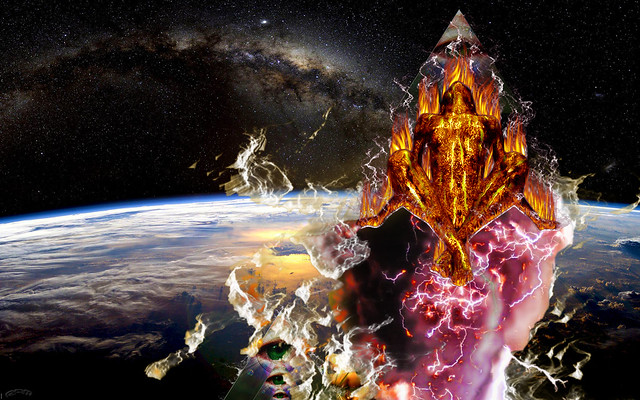
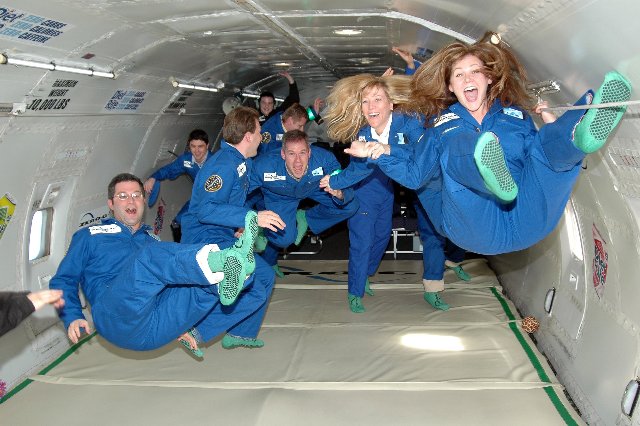

No comments:
Post a Comment
Add your perspective to the conscious collective